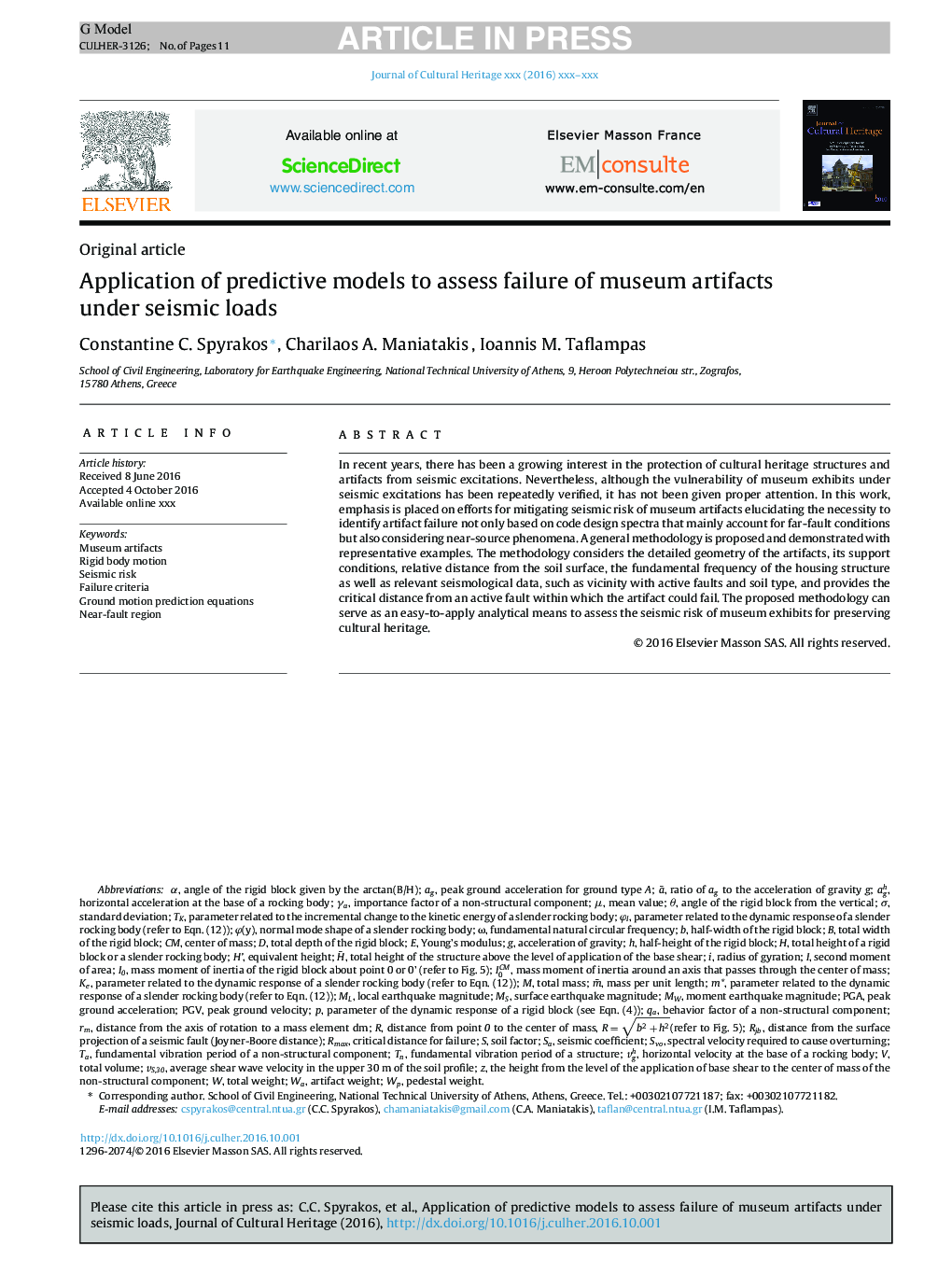| Article ID | Journal | Published Year | Pages | File Type |
|---|---|---|---|---|
| 5112758 | Journal of Cultural Heritage | 2017 | 11 Pages |
Abstract
In recent years, there has been a growing interest in the protection of cultural heritage structures and artifacts from seismic excitations. Nevertheless, although the vulnerability of museum exhibits under seismic excitations has been repeatedly verified, it has not been given proper attention. In this work, emphasis is placed on efforts for mitigating seismic risk of museum artifacts elucidating the necessity to identify artifact failure not only based on code design spectra that mainly account for far-fault conditions but also considering near-source phenomena. A general methodology is proposed and demonstrated with representative examples. The methodology considers the detailed geometry of the artifacts, its support conditions, relative distance from the soil surface, the fundamental frequency of the housing structure as well as relevant seismological data, such as vicinity with active faults and soil type, and provides the critical distance from an active fault within which the artifact could fail. The proposed methodology can serve as an easy-to-apply analytical means to assess the seismic risk of museum exhibits for preserving cultural heritage.
Keywords
Related Topics
Physical Sciences and Engineering
Chemistry
Physical and Theoretical Chemistry
Authors
Constantine C. Spyrakos, Charilaos A. Maniatakis, Ioannis M. Taflampas,
